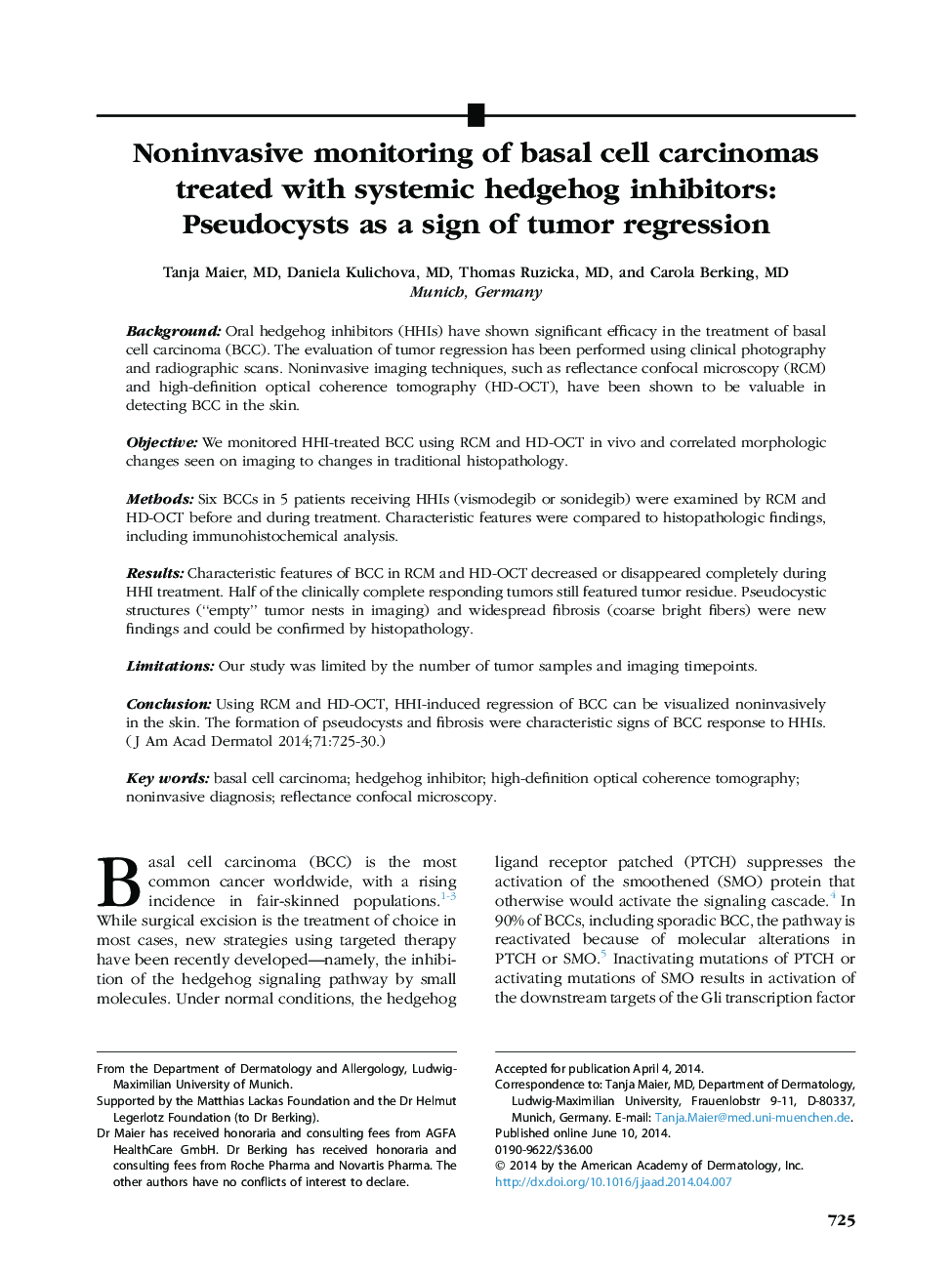| Article ID | Journal | Published Year | Pages | File Type |
|---|---|---|---|---|
| 6071633 | Journal of the American Academy of Dermatology | 2014 | 6 Pages |
BackgroundOral hedgehog inhibitors (HHIs) have shown significant efficacy in the treatment of basal cell carcinoma (BCC). The evaluation of tumor regression has been performed using clinical photography and radiographic scans. Noninvasive imaging techniques, such as reflectance confocal microscopy (RCM) and high-definition optical coherence tomography (HD-OCT), have been shown to be valuable in detecting BCC in the skin.ObjectiveWe monitored HHI-treated BCC using RCM and HD-OCT in vivo and correlated morphologic changes seen on imaging to changes in traditional histopathology.MethodsSix BCCs in 5 patients receiving HHIs (vismodegib or sonidegib) were examined by RCM and HD-OCT before and during treatment. Characteristic features were compared to histopathologic findings, including immunohistochemical analysis.ResultsCharacteristic features of BCC in RCM and HD-OCT decreased or disappeared completely during HHI treatment. Half of the clinically complete responding tumors still featured tumor residue. Pseudocystic structures (“empty” tumor nests in imaging) and widespread fibrosis (coarse bright fibers) were new findings and could be confirmed by histopathology.LimitationsOur study was limited by the number of tumor samples and imaging timepoints.ConclusionUsing RCM and HD-OCT, HHI-induced regression of BCC can be visualized noninvasively in the skin. The formation of pseudocysts and fibrosis were characteristic signs of BCC response to HHIs.
